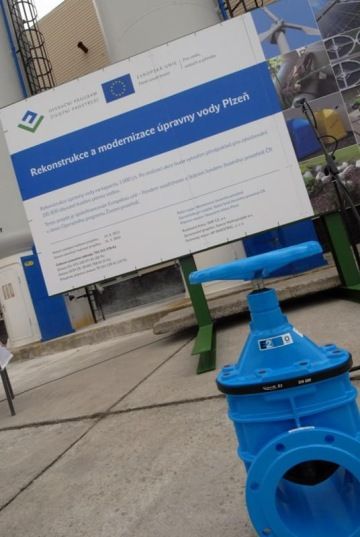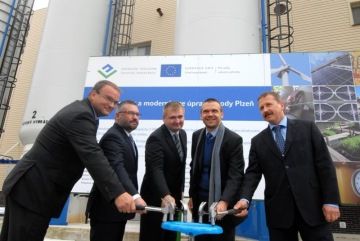Water treatment plant Pilsen
February 26, 2014
One of the largest investments in the water management infrastructure in the territory of the West Bohemian metropolis will ensure high quality drinking water for the citizens of Pilsen.
As shown by the test operation, which ran from September 2015 to March 2016, the water treatment plant after the reconstruction can, among other things, remove pesticides from the water so that their levels at the outlet are practically zero. The city therefore no longer needs a sanitation exemption. Plzeň received EU funding of CZK 660 million for the modifications, which took two years. SMP CZ, a.s., a member of the VINCI group, was the contractor of the project.
"This is one of the largest water management projects to improve the quality of drinking water, where thanks to a subsidy from the Operational Programme Environment 2007-2013, the output of the water treatment plant was increased up to 1,000 litres per second. Plzeň is a good example of how a city can arrange for a private company to take over and manage its water network and operate it directly. It was thanks to the shortening of the contract and the transfer of the infrastructure from the private company to the city that Plzeň was able to obtain a subsidy for the reconstruction and modernisation of the water treatment plant. Moreover, thanks to the ownership model, the price of water fully corresponds to the costs and the city also receives funds for maintenance. At the same time, it applies a solidarity price for water to its citizens," said Jan Kříž, Deputy Minister of the Environment for the Management of the EU Funds, Financial and Voluntary Instruments Section.
The modernisation of the treatment plant included, among other things, the addition of filtration via granulated activated carbon to the technological process. According to Jan Kretek, Vodarna Plzeň's operations director, this filtration was already in use at the Plzeň water treatment plant, but its scope was not sufficient for all the water treated. "In order to fully integrate it, it was necessary to reduce the filtration area of the rapid sand filters, to convert the ozonation tanks into pumping sumps and to complete the process with additional pumping of water. Another important measure was to improve the ozonisation process," explained Jan Kretek. A new way of mixing ozone with water has been introduced, with technical oxygen now used as the source for ozone production.
The modernisation has also made sludge management more efficient, with part of the process water being returned to the process without negatively affecting quality. "A technical highlight is the installation of UV radiation, which makes it possible to use the physical principle for water disinfection," added Jan Kretek. All modifications were carried out while the drinking water production was in constant operation. However, it is not only the complex technology that helps to monitor the water quality; two fish tanks also serve as a live indicator. The water at the outlet also goes into a tank with very sensitive sturgeon. In case of any abnormal reaction from them, it is possible to react in the subsequent technological stages of water treatment.
Main goals
- improving drinking water quality
- improving the efficiency of sludge management
Resources
- the project is co-financed by the European Union from the Cohesion Fund and the State Environmental Fund of the Czech Republic under the Operational Programme Environment
- total project costs: CZK 1.09 billion (incl. VAT)
- EU contribution: CZK 623.6 million (VAT excluded)
- amount of the contribution from the State Environment Fund: CZK 36.6 million (VAT excluded)
Duration
9/2013 - 9/2015





